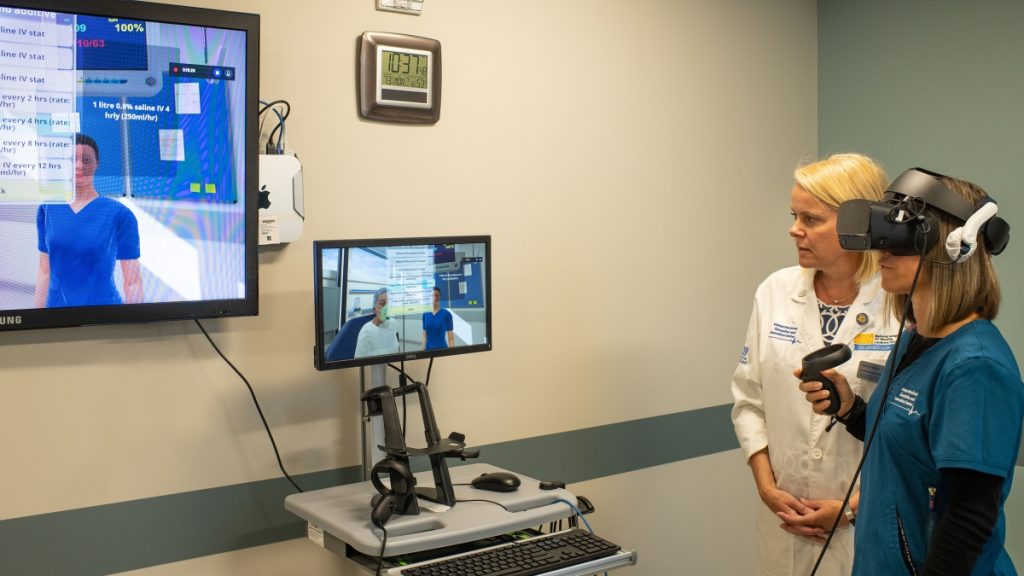As we live longer, stronger lives, we need advanced medical care to help us feel our best. Nurses use innovative technology to take great care of their patients, and the software, equipment, and hardware they use, such as telehealth, electronic charting, and point of care technologies, seems to improve every year. Here are seven technologies that help nurses administer greater patient care.
1. Telehealth
Rather than come into the office for every checkup, telehealth technology lets nurses meet with patients via video chat. During virtual appointments, patients can describe their symptoms and share images of worrying physical signs of an illness. Even within the same hospital, nurses and other practitioners use telehealth technology to monitor and care for patients remotely. Leading tech solutions providers like Cradlepoint help to ensure medical care professionals maintain a reliable internet connection with their patients. Technology hardware solutions such as Cradlepoint routers not only deliver uninterrupted service but are also a secure way to transmit information. Telehealth technology keeps sick patients out of doctor’s offices, where they could expose others.
2. Electronic Charting
The shift from paper charting to electronic charting not only makes it easy for nurses to view patient data and review orders, but also saves time on deciphering hard-to-read handwriting. Using electronic medical record programs, medical care professionals have access to real-time health updates, which helps to limit potential errors. Electronic health records also simplify transferring a patient’s medical records to a different facility. While the Health Insurance Portability and Accountability Act better ensures patient records remain secure and private, cryptography, blockchain, and similar technologies boost patient privacy.
3. Wearable Devices
Outfitting patients with wearable devices helps nurses monitor respiration, heart rate, sleep patterns, and other vitals. The unique medical devices also help patients know when to take over-the-counter medication or call their doctor. By combining wearable technology with apps and other devices, health care professionals help patients take control of their health. Another boon of wearable devices is they help reduce human error because the data comes directly from the device, which also allows for faster recordkeeping.
4. Smart Beds
With smart bed technology, nurses track patient vitals, movement, and weight, which helps keep patients comfortable and safe. Some beds let nurses reposition patients, which reduces injury and lets nurses perform their duties without extra help. Smart bed sensors alert nurses to patients attempting to get out of bed, information that helps reduce avoidable patient falls.
5. Point of Care Technologies
One example of point of care nursing technology is medication scanners, which scan a patient’s ID bracelet and prescriptions to ensure they match. The technology also lets nurses run lab tests at the patient’s bedside, providing rapid results. Vital sign machines outfitted with point of care technology let nurses scan patient data and transmit it, which eliminates the need to write readings and input them into charting manually. Some healthcare facilities set up smartphones and tablets at the patient’s bedside, so nurses may review patient information and correspond with the health care team without leaving the patient.
6. Centralized Command Centers
Centralized command centers help nurses manage clinical technology, supplies, and patient capacity. Dashboards and other software applications give updates in real-time and make it easy for medical professionals to track OR schedules, room availability, and patient pre-discharge needs. The main idea behind centralized command centers is to make capacity management more efficient.
7. Portable Monitors
Nurses use portable monitors to keep an eye on patients while away from their beds. Monitors track oxygen saturation levels, ECG, and respiratory rates, transmitting the data to a central monitoring system. Using the technology lets nurses do their jobs and check patient vitals at the right time from anywhere in the hospital.
As technological possibilities grow, opportunities for nurses to provide greater patient care grow with them. While nursing technology automates many tasks, it also paves the way for greater patient and nursing interactions.
